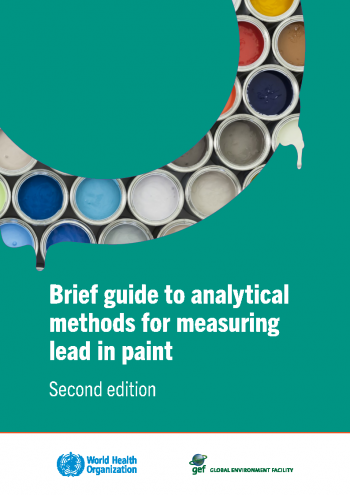Brief guide to analytical methods for measuring lead in paint (Second edition)
Lead is a toxic metal whose widespread use has caused extensive environmental contamination and health problems in many parts of the world. Human exposure to lead in 2017 was estimated to account for 1.06 million deaths and the loss of 24.4 million disability-adjusted-life-years (DALYs) from long-term health effects, with the highest burden falling on low- and middle-income countries.
This document provides a brief overview of analytical methods available for measuring lead in paint. It is primarily aimed at informing public health personnel, scientific institutions and policy-makers who are not laboratory specialists but who may need to develop plans for measuring the concentration of lead in new paint and for studies on the availability of lead paint on the market for purchase by consumers.
This document was prepared by WHO under the Global Environment Facility (GEF) full sized project 9771: Global best practices on emerging chemical policy issues of concern under the Strategic Approach to International Chemicals Management (SAICM). This project is funded by the GEF, implemented by UNEP and executed by the SAICM Secretariat. WHO acknowledges the financial contribution of the Global Environment Facility for the development, editing and design of the document.

 Arabic (on author's web-site) Chinese (on author's web-site) English (on author's web-site) French (on author's web-site) Russian (on author's web-site) Spanish (on author's web-site)
Arabic (on author's web-site) Chinese (on author's web-site) English (on author's web-site) French (on author's web-site) Russian (on author's web-site) Spanish (on author's web-site)
